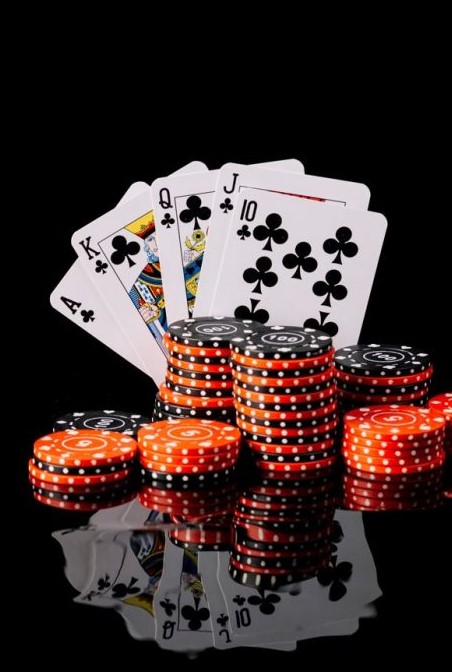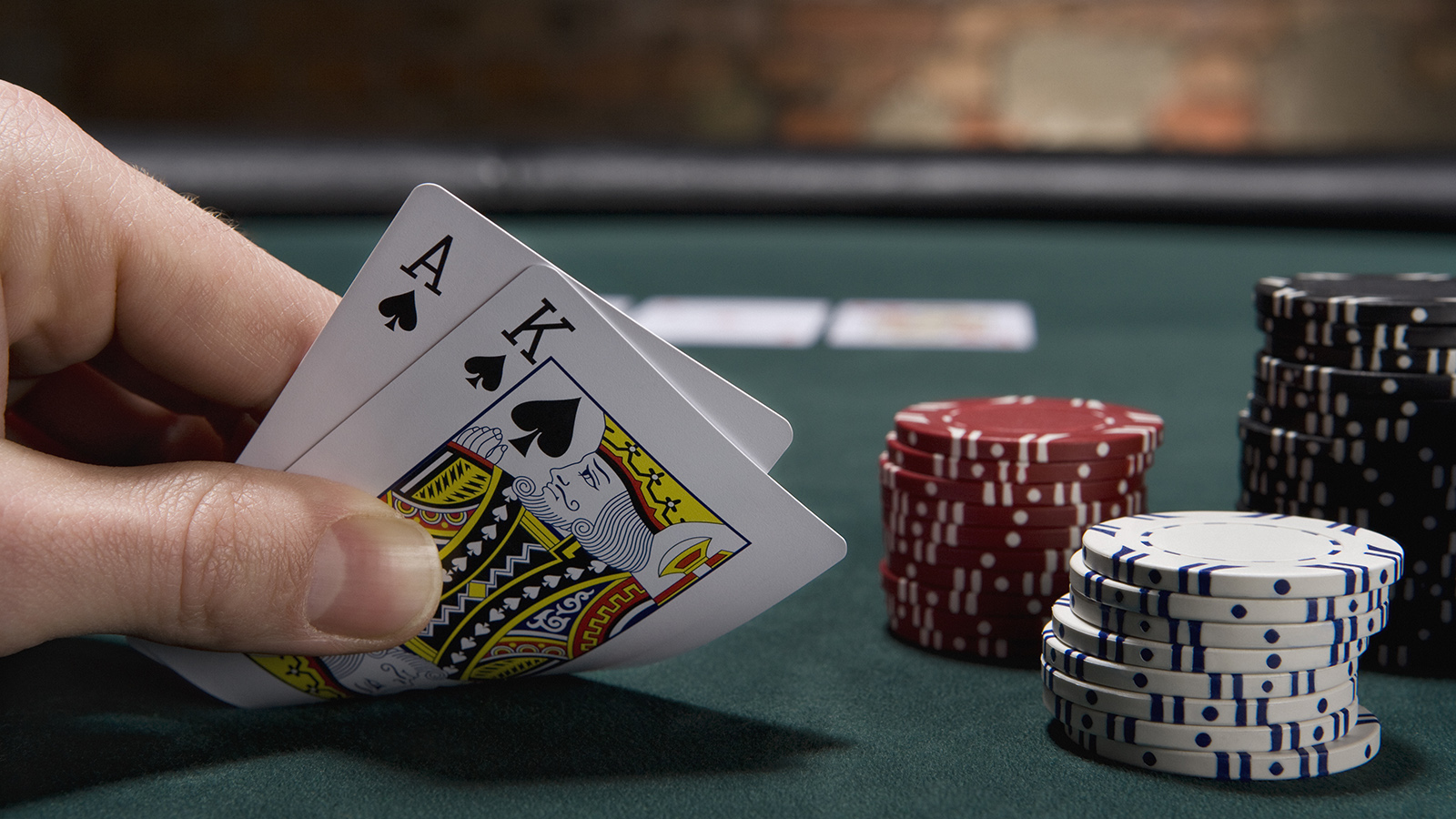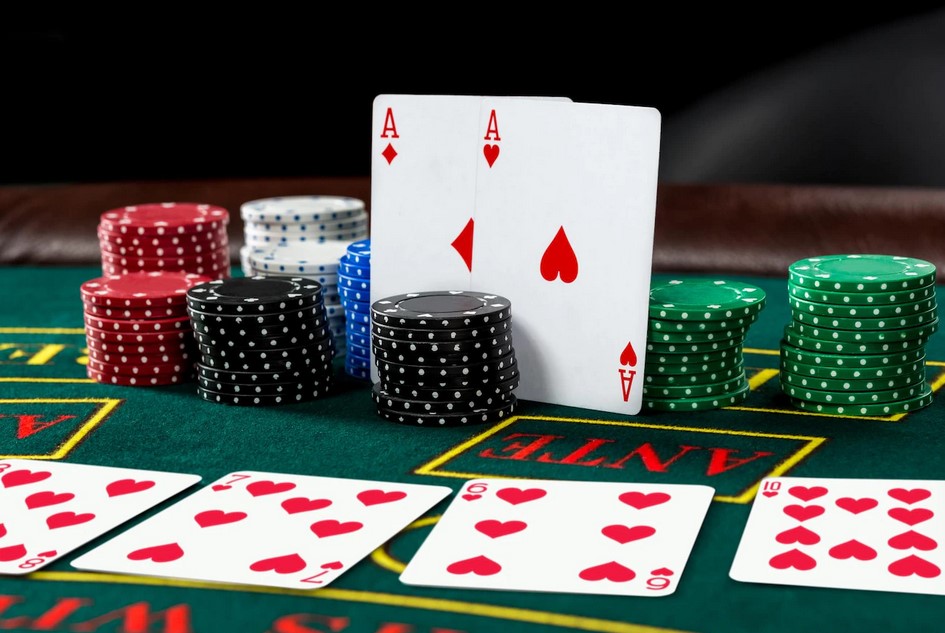1. What is Blackjack?
Blackjack is a casino game that involves betting and playing cards. The object of the game is to reach 21 points without going over, and beating the dealer’s hand. Cards are worth their face value with the exception of aces, which are worth 1 or 11 points, depending on the player’s preference. A hand with a value of 21 consisting of an ace and a card worth 10 points (king, queen, or jack) is called a blackjack.
Players bet by placing chips in the betting area before them. The dealer deals two cards to each player and two cards to himself. One of the dealer’s cards is face up, and the other is face down. Players can either hit (take another card) or stand (end their turn). If they go over 21, they “bust” and lose automatically. The dealer must also hit if their total is 16 or less, but can stand on any total 17 or higher. When both players and the dealer have finished their hands, the player with the highest total wins except in the case of a blackjack, which beats any other hand
There are many variations of blackjack available both in casinos and online. Some popular variants include Spanish 21, which allows players to draw more cards than usual; Double Exposure Blackjack, where both dealer cards are face up; and Progressive Blackjack, which features bonus payouts for certain hands. No matter which variant you play, the basic rules of blackjack remain the same.
Blackjack is a popular casino game because it offers players a chance to win money while also testing their skills. The object of the game is to get as close to 21 as possible without going over, and to beat the dealer’s hand. While luck plays a role in blackjack, there is also an element of strategy involved. Players need to know when to hit (take another card) and when to stand (end their turn), as well as what the value of each card is. With a little practice, anyone can learn how to play blackjack and potentially win some money.

2. The History of Blackjack
Blackjack is one of the oldest casino games around, believed to have originated in France in the 17th century. It’s a game that’s simple to learn but can take a lifetime to master, and one that has entertained gambling enthusiasts for centuries.
The exact origins of blackjack are unknown, but there are several theories about how it came to be. One story suggests that it was invented by a French nobleman named François Blanc, who allegedly learned the game from Spanish monks. Another tale claims that blackjack was created by an American gambler named Jonathan “Bugsy” Siegel. Regardless of its true origins, blackjack has certainly come a long way since its early days.
In its earliest form, blackjack was known as “twenty-one” and was played with just two cards. The goal of the game was to score 21 points without going over, and players could either hit or stand depending on their hand. If they went over 21, they automatically lost regardless of what their opponent had.
As time passed, more rules were added to blackjack in an effort to make the game more fair and exciting. In 1864, for example, a rule was introduced that allowed players to double down on any two cards. This gave players a better chance of winning and made the game more challenging.
Blackjack continued to evolve over the years, and in 1966 it was finally given its own official rules booklet by the Las Vegas Gaming Commission. This helped to standardize the game across different casinos and ensured that all players were playing by the same set of rules.
Today, blackjack is one of the most popular casino games around. There are countless variations of the game available online and in land-based casinos, each with its own set of rules and strategies. Whether you’re a beginner or a seasoned pro, there’s always something new to learn about blackjack. So if you’re interested in learning more about this timeless casino classic, keep reading for a detailed look at the history of blackjack.
3. How to Play Blackjack
Blackjack, also known as Twenty-One, is one of the most popular casino games in the world. The objective of the game is to beat the dealer’s hand by either getting 21 points on your first two cards, or by having a point total that is closer to 21 than the dealer’s.
The game is played with a standard deck of 52 cards. The player and dealer are both dealt two cards face up. The player’s goal is to beat the dealer’s hand by either getting 21 points on their first two cards, or by having a point total that is closer to 21 than the dealer’s.
If the player has a point total of less than 21, they can choose to take another card (hit), or stand pat (stick). If the player busts (goes over 21), they lose automatically. If the dealer has a point total of less than 17, they must hit; if their point total is 17 or more, they must stand. The winner is the person who has the highest point total at the end of the hand.
There are a few basic strategies that players can use in order to improve their chances of winning:
1. Always stand when you have a hand value of 17 or higher.
2. Hit on any hand totaling 16 or less.
3. Double down if you have a hand value of 10 or 11.
4. Split pairs (two cards of the same rank) if you have two cards of equal value.
4. Blackjack Strategy
There are a few basic strategy tips that players should adhere to in order to give themselves the best chance possible of winning. One of the most important is to avoid splitting pairs, as this can decrease the player’s chances of winning. Another key tip is to always take insurance when the dealer has an Ace up, as this will protect the player’s bet in the event of a blackjack. Finally, it is important to remember that the goal of blackjack is to get as close to 21 as possible without going over, so players should always hit when they have a hand value of 11 or less.
In blackjack, pairs should not be split unless the player is splitting aces or 8s. Aces should always be split, as this gives the player two chances of hitting a blackjack. 8s should only be split if the dealer’s up card is 9, 10, or Ace. Any other time, it is better to simply hit on an 8.
When the dealer has an Ace up, insurance should always be taken. This side bet pays out 2-1 if the dealer does indeed have a blackjack, and it protects the player’s initial bet in the event that this happens.
The goal of blackjack is to get as close to 21 as possible without going over. Therefore, players should always hit when they have a hand value of 11 or less. This gives them the best chance possible of getting closer to 21 without going bust.
Following these simple tips can help any player improve their chances of winning at blackjack. Players should split pairs of aces and 8s, take insurance when the dealer has an Ace up, and always hit when they have a hand value of 11 or less. By following these basic strategy tips, players can put themselves in a much better position to win at blackjack.
5. Blackjack Variations
Blackjack is a popular casino game that is enjoyed by millions of people around the world. The game is relatively simple to learn, and can be played for hours on end without getting bored. There are however, many different variations of blackjack that can be played in casinos, online, and even at home.
Perhaps the most common variation of blackjack is Spanish 21. This variation is played with eight Spanish decks, which have 48 cards instead of the normal 52. The four tens are removed from each deck, leaving only the ace through sevens. In Spanish 21, all player hands automatically win if they total 21 or less. If the player has a hand totaling 22 or more, it is a push (a tie).
The dealer always stands on a soft 17, and players can double down on any number of cards. They can also re-split pairs up to four hands, and they can surrender late in the game.
Another popular variation is Pontoon, which is played with eight decks of 48 cards (no tens). The dealer hits soft 17, and players can double down on any number of cards. They can also split pairs up to three times and surrender late in the game.
6. Blackjack Tips
There are a few basic tips that can help you increase your chances of winning. First and foremost, always split aces and eights. This gives you two chances to win instead of one and improves your odds significantly. Secondly, never split tens or fives. These hands have a high probability of winning as is, so splitting them would only decrease your chances. Finally, always stand on a hard 17 or higher. This means that you should never hit when you have a total of 17 or more points. Following these simple tips can help you improve your game and give you a better chance of winning big at the blackjack table.

7. Blackjack Myths
There are a lot of myths and misconceptions about blackjack. Here are some of the most common ones:
1. You can always bust if you hit a hard 17 or higher.
This is not true. You can actually draw another card and still stand if you have a hard 17.
2. You can’t double down after you split a pair.
This is also not true. You can double down after splitting a pair, as long as you still have the same number of cards as your original hand.
3. You can’t split aces.
This is also false. Aces can be split, and you can even receive more than one ace if they’re split correctly.
4. Insurance is a good bet.
This depends on the dealer’s up-card, but generally speaking, insurance is a bad bet.
5. You should always hit on 16 or lower.
Again, this depends on the dealer’s up-card, but in general, you should only hit on 16 if the dealer has a 7 or higher showing. Otherwise, you should stand.
6. It’s better to play at a full table than it is to play at a empty one.
This is not true. The number of players at the table doesn’t affect your odds of winning in blackjack.
7. Blackjack is a game of chance.
This is partially true, but there is also an element of skill involved in blackjack. If you know when to hit and when to stand, you can increase your chances of winning.
8. The casino always has the edge in blackjack.
This is also partially true. The house does have an edge, but if you use basic strategy, you can reduce that edge to less than 1%.
9. You should never buy insurance.
This is generally good advice, as insurance is a bad bet most of the time. However, there are situations where buying insurance can be beneficial.
Why play Blackjack?
